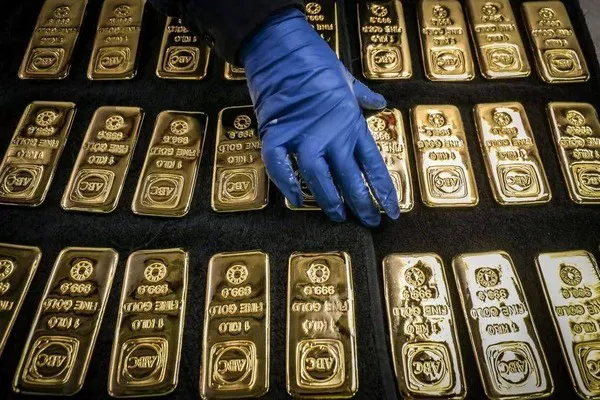Gold, often considered a safe haven asset, attracts significant attention from forex traders due to its unique behavior within the currency markets. The movement of gold prices can be influenced by a multitude of factors, ranging from global economic conditions to geopolitical events. Understanding these influences is crucial for forex traders looking to incorporate gold into their trading strategies effectively.
Economic Indicators and Monetary Policy: How Do They Impact Gold?
Economic indicators play a pivotal role in shaping gold prices in the forex market. Key indicators such as inflation rates, GDP growth, and unemployment figures can significantly influence market sentiment towards gold. For instance, high inflation levels tend to erode the value of fiat currencies, making gold more appealing as a hedge against inflation. Similarly, during periods of economic uncertainty or recession, investors often flock to gold as a safe harbor, driving up its demand and price. Moreover, monetary policy decisions by central banks, such as interest rate changes or quantitative easing measures, can also impact gold prices. Lower interest rates, typically used to stimulate economic growth, can decrease the opportunity cost of holding gold, making it more attractive to investors. Conversely, higher interest rates might divert investor funds away from gold into interest-bearing assets, causing gold prices to decline.
Geopolitical Events and Market Volatility: How do They Influence Gold Prices?
Geopolitical events and market volatility are key drivers behind gold’s movements in forex trading. Gold has historically served as a haven asset during times of geopolitical instability or unexpected market shocks. Events like geopolitical tensions, trade disputes, or unexpected political developments can trigger a flight to safety among investors, leading them to seek refuge in gold. The uncertainty associated with such events typically heightens market volatility, which in turn can increase demand for gold as traders look to protect their investments from potential downside risks. Moreover, gold’s inverse relationship with the US dollar further amplifies its response to geopolitical events. A weaker dollar, often observed during times of geopolitical turmoil, tends to boost gold prices as it becomes cheaper for foreign investors holding other currencies.
Market Sentiment and Speculative Trading: How Does Investor Sentiment Impact Gold?
Investor sentiment and speculative trading significantly influence the short-term movements of gold in forex markets. Gold prices can experience rapid fluctuations based on shifts in market sentiment and speculative activity. Positive investor sentiment, driven by optimism about economic growth or risk appetite, may lead to reduced demand for safe-haven assets like gold, causing prices to decline. Conversely, negative sentiment stemming from economic concerns or geopolitical uncertainties can bolster gold’s appeal, driving prices higher. Speculative trading, characterized by short-term bets on gold’s price direction, can also introduce volatility into the market. Traders often monitor sentiment indicators, such as the Commitments of Traders (COT) report, to gauge market positioning and potential price movements in gold. Understanding and interpreting these sentiment-driven dynamics is crucial for traders seeking to capitalize on short-term price fluctuations in the gold forex market.
Technological Developments and Trading Strategies: How Do They Impact Gold Trading?
Advancements in trading technology and evolving trading strategies have transformed the dynamics of gold trading in forex markets. The rise of algorithmic trading and high-frequency trading (HFT) has led to increased liquidity and efficiency in gold markets. These technologies enable faster execution of trades, tighter bid-ask spreads, and improved price discovery, benefiting both institutional and retail traders. Additionally, the accessibility of gold trading through online platforms and mobile apps has democratized market participation, allowing individual traders to engage in gold forex trading more easily. Moreover, evolving trading strategies, such as quantitative modeling and trend-following techniques, have reshaped how traders analyze and approach gold markets. By incorporating these technological advancements and innovative strategies, traders can better navigate the complexities of gold trading and capitalize on emerging opportunities in the forex market.
See Also Is SPDR Gold Trust a Good Investment? Exploring the Pros & Cons
In conclusion, the movement of gold in forex trading is influenced by a complex interplay of economic, geopolitical, and market-specific factors. Traders must remain vigilant and adaptive to changing conditions to effectively incorporate gold into their forex strategies. By understanding the underlying drivers behind gold price movements and leveraging advanced trading tools and strategies, traders can enhance their ability to navigate the dynamic landscape of the gold forex market with confidence.


